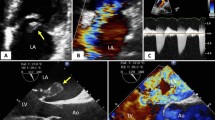Abstract
Cardiovascular magnetic imaging is a noninvasive, three dimensional tomographic technique that allows for a detailed morphology of the cardiac chambers, the accurate quantification of right ventricle volumes, myocardial mass, and transvalvular flow. It can also determine whether right ventricular diastolic function is impaired through pulmonary hypertension. The aim of this article is to review the main kinetic, morphological and functional changes of the right ventricle that can occur in patients affected by pulmonary arterial hypertension (PAH) and to assess how the MRI findings can influence the prognosis, and guide the decision-making strategy. In those cases in which MRI shows a significant cardiac diastolic dysfunction, the prognosis is predictive of pharmacological treatment failure, and mortality. This leaves double lung-heart transplantation as the only therapeutic option. The coexistence of PAH and left ventricle impairment causes worse right ventricle function, leads to a poor prognosis, and may change the therapeutic strategies (for example, PAH associated with left ventricle dysfunction may require a double lung-heart transplant).
















Similar content being viewed by others
References
McLure LE, Peacock AJ (2007) Imaging of the heart in pulmonary hypertension. Int J Clin Pract 61:15–26
Chin KM, Rubin LJ (2008) Pulmonary arterial hypertension. JACC 16:1527–1538
Simonneau G, Galie N, Rubin LJ et al (2004) Clinical classification of pulmonary hypertension. J Am Coll Cardiol 43:5–12
Ley S, Fink C, Zaporozhan J et al (2005) Value of high spatial, high temporal resolution magnetic resonance angiography for differentiation between idiopathic, thromboembolic pulmonary hypertension: initial results. Eur Radiol 15:2256–2263
Nagendran J, Mickelakis E (2007) MRI. One-stop shop for the comprehensive assessment of pulmonary hypertension. Chest 132:2–5
Coluden R (2006) State of the heart imaging techniques in chronic thromboembolic pulmonary hypertension. Proc Am Thoracic Soc 3:577–583
Di Guglielmo L, Dore R, Vespro V (2005) Pulmonary Hypertension: role of computed tomography and magnetic resonance imaging. Ital Heart J 6:846–851
McCann G, Gan C, Beek A, Niessen HW, Vonk Noordegraaf A, Van Rossum AC (2007) Extent of MRI Delayed enhancement of myocardial mass is related to right ventricular dysfunction in pulmonary artery hypertension. AJR 188:349–354
van Wolferen S, Marcus JT, Boonstra A et al (2007) Prognostic value of right ventricular mass, volume, and function in idiopathic pulmonary arterial hypertension. Eur Heart J 28:1250–1257
Marcus JT, Vonk Noordegraaf A, Roeleved R et al (2001) Impaired left ventricular flling due to right ventricular pressure overload in primary pulmonary hypertension. Chest 119:1761–1765
Roeleveld R, Marcus JT, Faes T et al (2005) Interventricular septal configuration at MR imaging, pulmonary arterial pressure in pulmonary hypertension. Radiology 234:710–717
Dellegrottaglie S, Sanz J, Poon M et al (2007) Pulmonary hypertension: accuracy of detection with left ventricular septal-to-free-wall curvature ratio measured at cardiac MR. Radiology 243:63–69
Kreitner K, Ley S, Kauczor HU et al (2004) Chronic thromboembolic pulmonary hypertension: pre- and postoperative assessment with breath-hold MR imaging techniques. Radiology 232:325–326
Nikolaou K, Schoenberg S, Attenberger U et al (2005) Pulmonary arterial hypertension: diagnosis with fast perfusion MR imaging and high spatial resolution MR angiography preliminary experience. Radiology 236:694–703
Beygui F, Furber A, Delepine S et al (2004) Routine breath-hold gradient echo MRI-derived right ventricular mass, volumes and function: accuracy, reproducibility and coherence study. Int J Cardiovasc Imaging 20:509–516
Boxt L (1996) MR imaging of pulmonary hypertension, right ventricular dysfunction. Magn Reson Imaging Clin N Am 4:307–325
Lankhaar J, Westerhof N, Faes T et al (2006) Quantification of right ventricular afterload in patients with and without pulmonary hypertension. Am J Physiol Heart Circ Physiol 291:H1731–H1737
Marcu C, Beek A, Van Rossum A (2006) Cardiovascular magnetic resonance imaging for the assessment of the right heart involvement in cardiac, pulmonary disease. Heart Lung Circ 15:362–370
Sanz J, Kuschnir P, Rius T, Salguero Pulmonary R et al (2007) Hypertension: noninvasive detection with phase contrast MR imaging. Radiology 243:70–79
Van Wolferen S, Marcus JT, Westerhof N et al (2008) Right coronary flow impairment in patients with pulmonary hypertension. Eur Heart J 29:120
Kreitner K, Kunz R, Ley S et al (2007) Chronic thromboembolic pulmonary hypertension-assessment by magnetic resonance imaging. Eur Radiol 17:11–21
Domenighetti G (2007) Prognosis, screening, early detection and differentiation of arterial pulmonary hypertension. Swiss Med WKLY 137:331–336
Kovacs G, Reiter G, Reiter U, Rienmuller R, Peacock A, Olschewski H (2008) The emerging role of magnetic resonance imaging in the diagnosis and management of pulmonary hypertension. Respiration 76:458–470
Sanz J, Dellegrottaglie S, Kariisa M et al (2007) Prevalence and correlates of septal delayed contrast enhancement in patients with pulmonary hypertension. Am J Cardiol 100:731–735
Blyth K, Groenning B, Martin T, Foster J (2005) Contrast enhanced-cardiovascular magnetic resonance imaging in patients with pulmonary hypertension. Eur Heart J 26:1993–1999
Gan C, Holverda S, Marcus JT et al (2007) Right ventricular diastolic dysfunction, the acute effects of sidenafil in pulmonary hypertension patients. Chest 132:11–17
Author information
Authors and Affiliations
Corresponding author
Rights and permissions
About this article
Cite this article
Marrone, G., Mamone, G., Luca, A. et al. The role of 1.5T cardiac MRI in the diagnosis, prognosis and management of pulmonary arterial hypertension. Int J Cardiovasc Imaging 26, 665–681 (2010). https://doi.org/10.1007/s10554-010-9623-2
Received:
Accepted:
Published:
Issue Date:
DOI: https://doi.org/10.1007/s10554-010-9623-2




